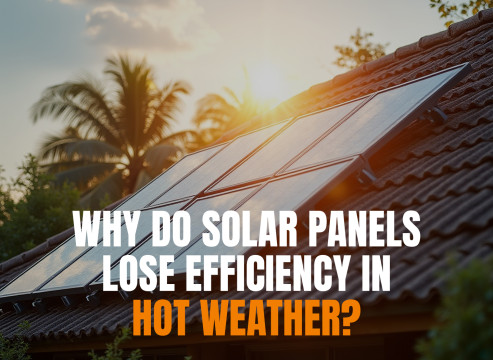
Why Do Solar Panels Lose Efficiency in Hot Weather?
Solar panels are a popular and effective way to harness renewable energy, but many users notice a decline in efficiency during hot weather. Understanding why solar panels lose efficiency in high temperatures is crucial for maximizing their performance. Here are the key reasons behind this phenomenon.
Temperature Effects on Solar Panel Efficiency
1. Thermal Characteristics of Silicon
Solar panels primarily use silicon as a semiconductor material. As temperatures rise, the electrical properties of silicon change. Specifically, higher temperatures increase the thermal energy of the electrons within the silicon, which can lead to a decrease in voltage output. For every degree Celsius above 25°C (77°F), solar panel efficiency typically declines by approximately 0.3% to 0.5%. This means that on particularly hot days, the output can be significantly lower than expected.
2. Increased Electrical Resistance
Heat also increases electrical resistance within the solar cells and wiring. This higher resistance can hinder the flow of electricity generated by the panels, further contributing to reduced efficiency. Essentially, as the temperature rises, it becomes more challenging for the system to convert sunlight into usable electricity.
3. Panel Temperature vs. Ambient Temperature
While ambient temperatures may be manageable, solar panels can reach much higher temperatures—up to 66°C (150°F) or more—when exposed to direct sunlight23. This extreme heat exacerbates the issues mentioned above, leading to even lower efficiency levels during peak sunlight hours.
4. Impact of Shading and Installation Factors
Improper installation can also play a role in how well solar panels perform in hot weather. If panels are installed too closely together or without adequate ventilation, they may not cool down effectively, trapping heat and reducing efficiency further. Ensuring proper spacing and airflow around panels can help mitigate these temperature-related issues.
Mitigating Efficiency Loss
To combat the effects of heat on solar panel performance, several strategies can be employed:
1. Optimal Installation: Ensure that solar panels are installed with sufficient spacing for airflow and at an angle that maximizes exposure while minimizing overheating.
2. Choosing High-Quality Panels: Selecting solar panels with a lower temperature coefficient can help reduce efficiency losses during hot weather.
3. Regular Maintenance: Keeping panels clean and free from debris can enhance their ability to dissipate heat and maintain performance.
Conclusion
While solar panels do lose efficiency in hot weather due to factors like increased thermal energy in silicon and heightened electrical resistance, they continue to function effectively even at elevated temperatures. The reduction in efficiency typically ranges from 10% to 25%, depending on various conditions.
Understanding these dynamics allows solar panel owners to take proactive measures to optimize performance and ensure that their investment continues to yield benefits throughout the year—regardless of temperature fluctuations. By implementing best practices for installation and maintenance, businesses and homeowners can maximize energy production from their solar systems even in the heat of summer.

